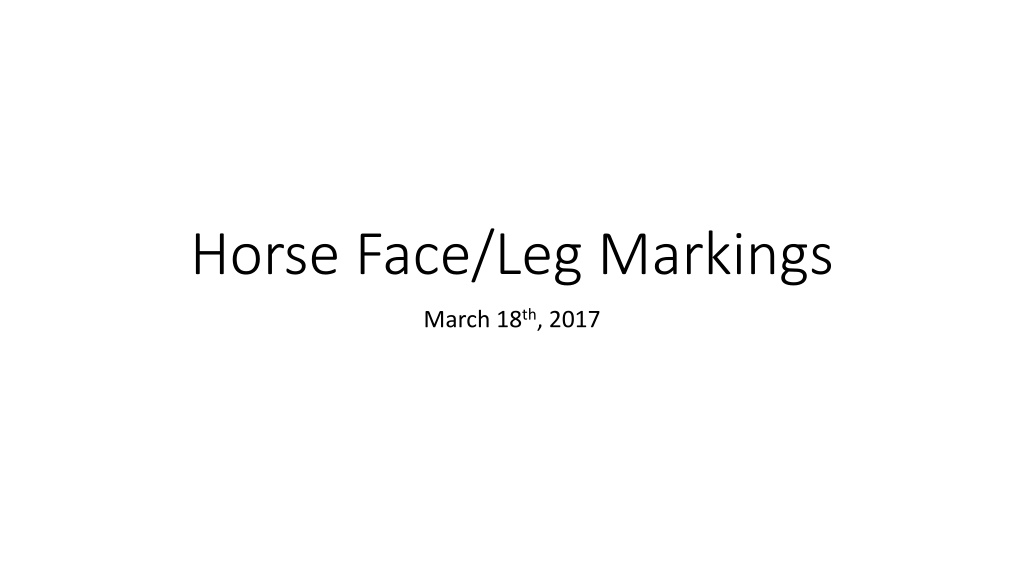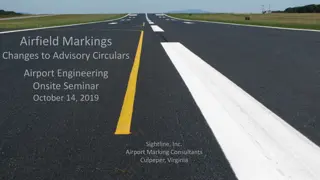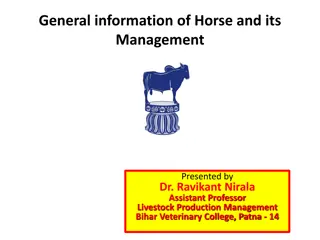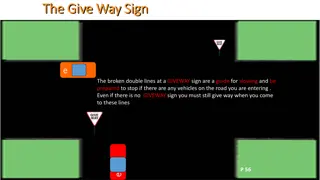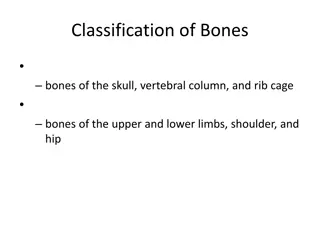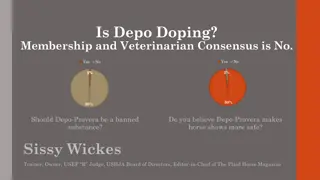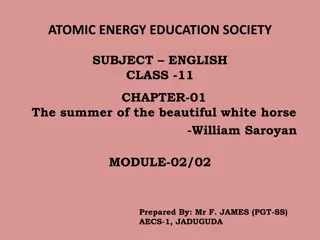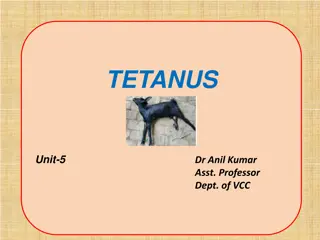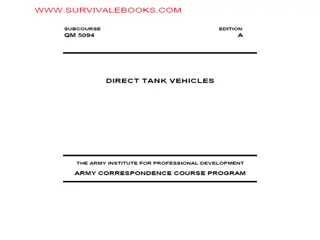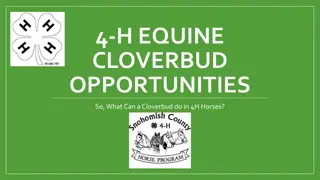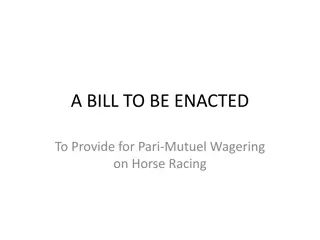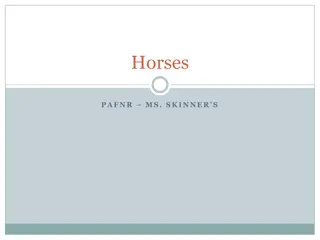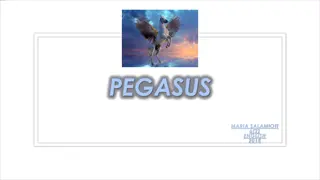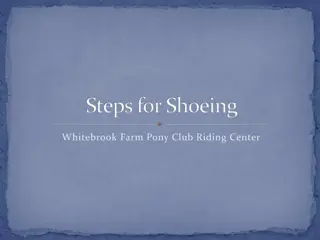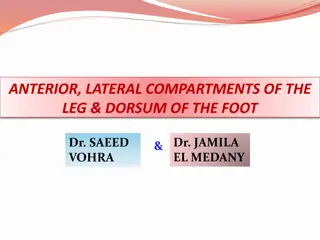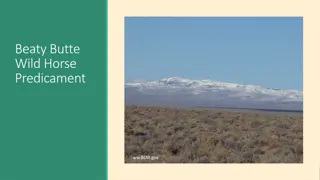Understanding Horse Face and Leg Markings
Learn about different markings found on a horse's face and legs, such as snip, star, strip, blaze, bald face, ermine, combinations, and coronet. These unique patterns create individuality in horses and can range from small spots to large white areas covering the face or leg. They can be symmetrical or asymmetrical, leading to distinctive appearances in each horse.
Download Presentation

Please find below an Image/Link to download the presentation.
The content on the website is provided AS IS for your information and personal use only. It may not be sold, licensed, or shared on other websites without obtaining consent from the author. Download presentation by click this link. If you encounter any issues during the download, it is possible that the publisher has removed the file from their server.
E N D
Presentation Transcript
Horse Face/Leg Markings March 18th, 2017
Snip A snip is a patch of white on the horse's nose. It may be a small spot between the nostrils, or it may extend over the whole nose.
Star A star is a white spot on a horse's forehead, between the eyes. A faint star may only appear as a few white hairs, or the star can be large enough it covers the whole forehead area. Stars can be very symmetrical in shape, like spots or diamonds, or they may appear as irregular splotches. Some stars extend down bridge of the nose without connecting to any other facial markings.
Strip A strip is a band of white that extends in a more or less even stripe down the bridge of the nose. A strip may connect to a star at the top and extend to the white markings on the horse's nose. Or they may be broken so there are three separate facial markings on the face, a star, strip and snip. The strip is quite narrow, only an inch or two wide and stays on top of the nasal bone.
Blaze A blaze covers the whole bridge of the nose, from the forehead area, down to the nose. The difference between a strip and a blaze is much wider than the strip. Blazes can be very symmetrical, or they can wander down the face unevenly
Bald A bald face is covered with a much wider white marking than a blaze. The white areas extend from the forehead to the nose, and from side to side beyond the eye area to the cheek bones. The whole nose and muzzle area can be white. It's not uncommon to see bald faced horses with blue eyes. Horses with a lot of white on their noses may be more prone to sunburn.
Ermine An ermine is a small colored spot within any white area on the horse's face. Ermines may appear within a star or blaze. The may be round or very asymmetrical. Ermines also appear on leg markings.
Combinations Combinations of these markings result in horses' unique facial markings. Typical combinations include star and strip, star and snip, and star, strip and snip. If your horse suddenly develops white markings around the eyes these aren't likely to be permanent.
Coronet A small white band just above the hoof
Pastern A white marking that extends from the edge of the hoof halfway up the pastern
Sock A white marking that extends from edge of the hoof two-thirds of the way up the leg
Half Stocking A white marking that extends from the edge of the hoof halfway up the middle of the leg
Stocking A white marking that extends from edge of the hoof to the knee or hock
